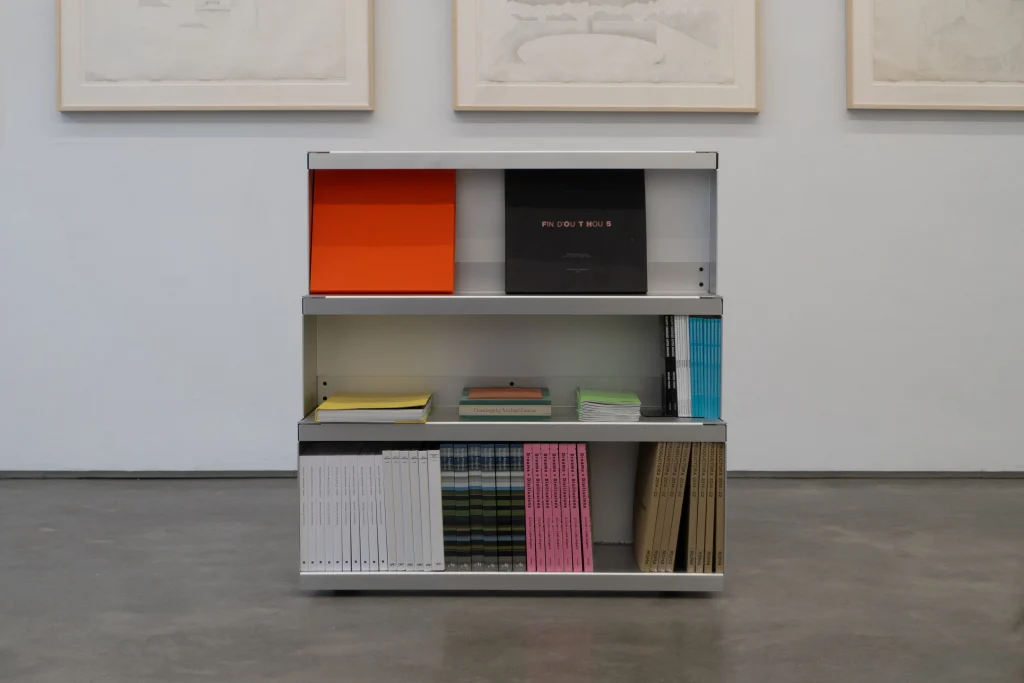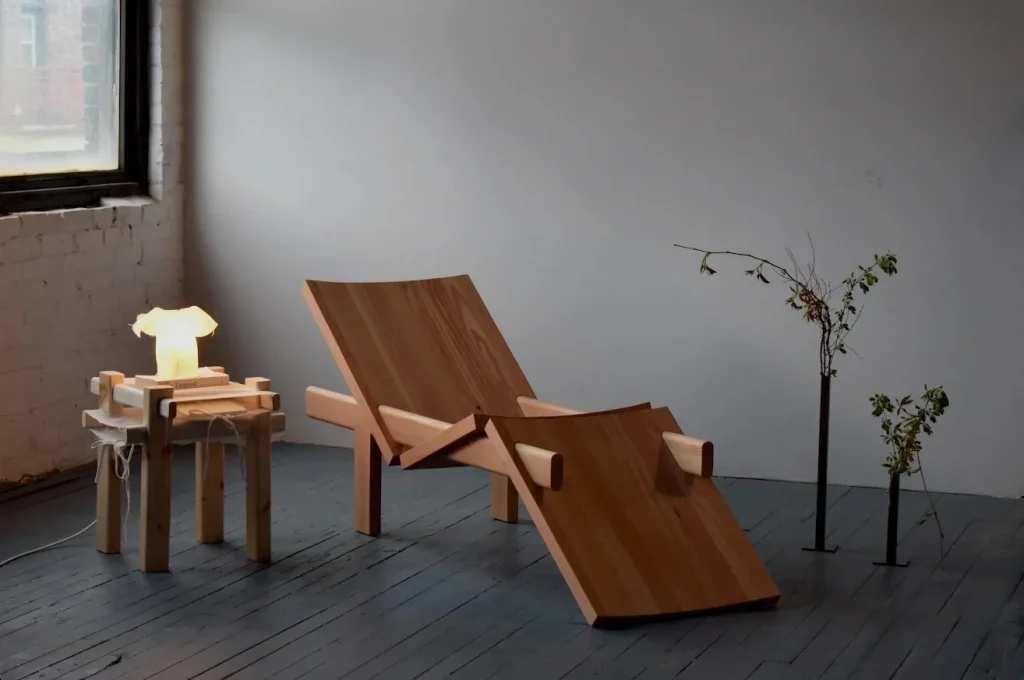
"Inside Looking Out": Norway at Virtual Design Destination 2020
“Anyone that creates for a living faces challenges relating to restrictions – lack of funding, access to materials and equipment, the time you need to create something, and so on. The pandemic only added to this long list of restrictions, but then something interesting happened with these makers – many of them altered their making process and shifted their focus in order to keep creating something.”
– Tonje Kjellevold, curator of the Norwegian collection, “Inside Looking Out”


“Inside Looking Out” is part of the Virtual Design Destination presented by Adorno at London Design Festival, 12 – 20 September 2020. Join us for a tour of the virtual environment and collection with curator Tonje Kjellevold in conversation with Kristen de la Vallière of @sayhito_ on Monday, 14 September at 15:00 PM BST. “Inside Looking Out” is kindly supported by the Embassy of the Kingdom of Norway, London & Nordic Culture Point.
The artist’s studio is a space of creation and contemplation; busy hands working to mould imagined ideas in the real world, bringing the subconscious to reality. The presence of the maker is evident between the to-be-used materials, almost completed pieces, and examples of a full artistic practice. From the open window, sounds of the fjord below connect the studio to the outside world. Restrictions placed in the spring created a heightened division between these spaces – while the outside took pause, the inside of the studio became a space of refuge, isolation, and shifted thinking. The artist’s studio became a space to consider the new reality, forcing makers to assess their practices and discover new possibilities for creation.
“Inside Looking Out”, the Norwegian collection curated by Tonje Kjellevold, takes a closer look at artistic practices in relation to restrictions, isolation, and solitude – which, in the case of these makers, have afforded some unexpected opportunities. The collection is presented in maker Kiyoshi Yamamoto’s studio which overlooks Nøstebukten, a part of Pudde Fjord on Norway’s west coast, bringing the viewer into an intimate space of creation. With closed studios, unavailable materials, and stay-at-home orders, makers turned back to their own practices and considered the possibilities of renewing previously created pieces, adding to past series, or deeply exploring their chosen craft. From textile to glass to ceramic to tactile design-art, each maker presented here has taken this new reality as an opportunity to approach their practices in an alternative way, reimagining their methods of creation and developing unique pieces that speak to the current moment in time.
“Inside Looking Out” features work by Karen Klim, Kiyoshi Yamamoto, Nathalie Fuica Sanchez, Ramona Salo, and Sisse Lee.
Inside Looking Out
What are the main themes presented across the works in this collection?
Mainly solitude, restriction, and creation, but also reinvention. The five makers presented in this collection work in different ways technically, but there is a commonality there that, in my eyes, became more visible during the pandemic. Anyone that creates for a living faces challenges relating to restrictions – lack of funding, access to materials and equipment, the time you need to create something, and so on. The pandemic only added to this long list of restrictions, but then something interesting happened with these makers – many of them altered their making process and shifted their focus in order to keep creating something. Karen Klim started working with smaller glass sculptures that she could easily manage making by herself (when blowing large glass sculptures, a glass blower will usually work with one or more people); Kiyoshi Yamamoto returned to his archive of works and started re-configuring his pieces, creating new works from the old; and so on.




Which three words would you use to describe the contemporary design and crafts scene in Norway?
That’s too hard! I have no idea how to do that. I guess maybe hard-working, resilient, and adaptable? But, that’s more about what a maker, designer, or artist needs to be in order to survive, unfortunately.
I’ve been working with the Norwegian and Norway-based contemporary crafts field for the past five years, so that is my main expertise, but, of course, the design, craft, and fine art field intersect and intermingle, and share many commonalities. The Norwegian visual art field, in general, is relatively well supported in comparison to other countries. There are working grants available to makers, and you can apply for additional support for projects and so on, and there are plenty of organisations that work to support the different art fields with their international endeavours – like Norwegian Crafts, where I work as project manager. Despite these very important supporting and funding structures, artists and makers are still not being properly remunerated for the work that they do. The annual average income for an artist, designer, or maker is very low. But the amount of high-quality, innovative, and interesting works being created in Norway across the entire field is staggering.




Why have you chosen the scenography of designer Kiyoshi Yamamoto’s studio for this collection?
When ADORNO approached me and asked me to curate something that would comment on the new reality, the reality we’re all living in where the COVID-19 pandemic is omnipresent, my thoughts immediately went to Nathalie Fuica Sanchez’s textile works that are based off of weighted blankets. She makes them by sewing a duvet and filling it with Styrofoam pellets, then she embroiders a pattern by sewing through both sides of the duvet, forcing the pellets into shapes and restricting their movement inside the duvet. It’s exactly the feeling of isolation I think. The work makes you think of anxious sleeping, of restrictions and control, but also of the comfort of a home, of a safe space, that some of us are privileged enough to have. It’s beautiful when you realise the work is depicting a portal, and that Nathalie Fuica Sanchez has named it ‘A Blessing and a Curse’.
I toyed with the idea of using a home, or a room in a house, to stage the exhibition, but my mind kept on bringing me back to Kiyoshi Yamamoto’s studio in Bergen, that I’ve been lucky enough to visit at least once a year for the past years. Many makers spend the majority of their time in the studio, turning it more into a home than their actual home, so it made sense for me to use a studio. Yamamoto’s studio is an extension of him and his artistic practice, so we had to rework it a bit to make room for the other makers, turning it into more of a makerspace. But I like how it links to the other collections in ADORNO’s show through the windows – connecting the studio with the outside world.


“Inside Looking Out” directly explores the uncertainty of the current moment and the design and crafts community’s ongoing response to it. How do you think each of the participating artists and designers have channelled this into the pieces presented here?
Not all of the pieces in this collection were made during the pandemic. For many makers, access has been a big problem with this current situation – access to materials, funding, equipment, even to their own workspaces. Many artists share studios, so naturally, with social distancing there have been less opportunity to work. When Norway closed down on 13th March due to COVID-19, Yamamoto’s many exhibition and commission projects were put on hold. Unable to receive any new materials he began reassessing the amount of work he has been producing the past years. Working with what he had available in his studio, and works he had made for previous exhibitions, Yamamoto found new ways of re-configuring and revising his works – making new pieces from the old without having to bring in new materials. In the collection, “Inside Looking Out”, Yamamoto presents a selection of glass and textile works that he has revisited and reworked during the pandemic.
Ceramic artist Sisse Lee has revisited objects created for her MFA degree show back in 2018. The white, high gloss ceramic vases she presents in “Inside Looking Out” were once part of a large installation that she decided to pick apart, creating new, smaller installations from the old.
Ramona Salo’s artistic practice spans fashion, costume design, storytelling, and performance. During the pandemic, Salo revisited a purple cropped sweater in pure wool that she had made pre-covid and decided to make a purple wool balaclava to match. The balaclava, although not necessarily medically efficient as a face mask, is perfect protection in the cold arctic winter.
Nathalie Fuica Sanchez’s practice spans ceramics, textile, sculpture, and ready-mades. She draws inspiration from personal experiences such as random encounters with strangers, and from how others might interact with her art pieces. In [this collection], Sanchez presents a wall tapestry entitled “A Blessing and a Curse”. The duvet-like piece is inspired by weighted blankets, a connotation which lends a sense of intimacy and privacy to the piece. Simultaneously, the tapestry’s pattern shows a structured and grand looking portal – a passage into something new, something unknown.
Karen Klim has been working with glass in her own studio in Oslo since 1978. During the pandemic, Klim devoted herself to working with small and simple forms that she could easily handle alone. The result is, among other pieces, “Kongle” and “Torso”. Klim’s biggest source of inspiration is water. In her studio at Frysja, she is surrounded by it, as Oslo’s biggest water supply source, Maridalsvannet, runs past Frysja into the river Akerselva. Watching the water and the surrounding nature at Frysja change through the seasons is a constant and inexhaustible encouragement for Klim.
Ramona Salo, “I am not the grass in your boots” Exhibition Object
Thinking into the future, which aspects of this slower (re)approach to making do you think will continue in the Norwegian design and crafts scene?
The uncertainty of the pandemic has made planning really hard for everyone. Makers are having to start and stop projects over and over again, so it’s a very inefficient and demotivating way of working. I know for Kiyoshi Yamamoto the current situation has made him rethink his production volume, the amount of art pieces and commissions he is working on, so for him a slower pace might be a welcome change. A slower pace might be the new norm for everyone. The whole art market, including galleries, museums, as well as artists and designers have taken a real beating already, so I don’t believe in everything just bouncing back post-COVID. Perhaps we’ll see a de-scaling of the whole visual art field – and maybe that’s a good thing. Economically it will be really difficult for a while, but the visual art field and the planet could do with less international jet setting and mega events, and more local events, smaller, intentional gatherings, and slow travel.
For Norway, my wish is for the politicians and general public to see the value in a thriving visual art field and for them to recognize that it takes continued support and contact with the artists and supporting organisations to make that happen.


With reference to the Virtual Design Destination’s theme, how does this collection respond to the so-called “New Reality”?
“Inside Looking Out” is about taking a look at what happens behind the closed doors of a maker’s studio – or a virtual makerspace – in the silence and stillness of isolation. I think many of us had, and perhaps are still having, the feeling that the world was somehow closing down when the pandemic started, that the wheels stopped turning, but the fact is creation and making is still happening all around. We’re still in here looking out, in a way. So, I suppose the collection is trying to highlight that fact, that there’s a resilience and a force there, it’s just not as visible and accessible as before the pandemic.






Has your approach to the curation of this collection been affected by the ongoing uncertainty in the world? Why or why not?
This is the first thing I’ve ever curated. I’ve worked with exhibition making through my position at Norwegian Crafts for years, but diving straight into a 3D-rendered, digital exhibition for my first curatorial project, I really didn’t know what to expect. So, it’s hard to say how much the current situation has affected this particular task.
Meet Tonje Kjellevold, Curator of “Inside Looking Out”
Tonje Kjellevold (b. 1989) lives in Oslo. She is the project manager of networks, collaborations and partnerships at Norwegian Crafts. She is the co-editor of the craft anthology Earth, Wind, Fire, Water (Arnoldsche Art Publishers, 2020) together with curator Randi Grov Berger.
Through her work at Norwegian Crafts, she has contributed to many international exhibitions and other projects, including the Sino-Norwegian exhibition “Beyond G(l)aze, Suzhou Jinji Lake Art Museum, China and KODE Art Museums and Composer Homes, Bergen” (2015); the Nordic Craft Pavilion magic language /// game of whispers at Revelations Fine Craft and Creation Fair, Grand Palais, Paris (2015); the exhibition series “Norwegian Presence Norwegian Contemporary Crafts and Design”, Milan (2015–2019) and Earth, Wind, Fire, Water – the 44th edition of Tendenser currently on show at Galleri F 15 in Norway.
Kjellevold holds a BA in East-Asian studies and Mandarin Chinese from the University of Oslo, with additional language studies in Mandarin from Fudan University, Shanghai. Since 2019, she has been studying Norwegian and Nordic linguistics and literature.
Which aspects of curating a collection for a virtual exhibition have intrigued and/or surprised you?
All of the technical solutions and various skill sets that go into the making of a virtual exhibition is super fascinating to me. It’s not something I’ve ever witnessed in that way before. I’m still the biggest fan of visiting exhibitions where you can physically touch and see the objects, but there is something really nice about being able to bring makers and audiences together into one space virtually, when doing so physically is impossible.
What are you most excited to share (ex. thematically, a piece, a designer, etc.) with the Virtual Design Destination audience?
I’m really excited to see the whole thing. It’s really difficult to envision it coming together in the virtual space when you’re not able to be in there, physically, with the objects. I look forward to seeing Kiyoshi Yamamoto’s and Karen Klim’s glass objects play off of each other – I’m excited to see Nathalie Fuica Sanchez’s grand textile tapestry hanging in the space like a portal to another universe. I’m hoping Ramona Salo’s pieces of clothing and footwear will stand out and also give some real humanity to the otherwise bare space, and also for Sisse Lee’s porcelain vases to shine and gleam with the same gloss and sparkle that they have in real life.








